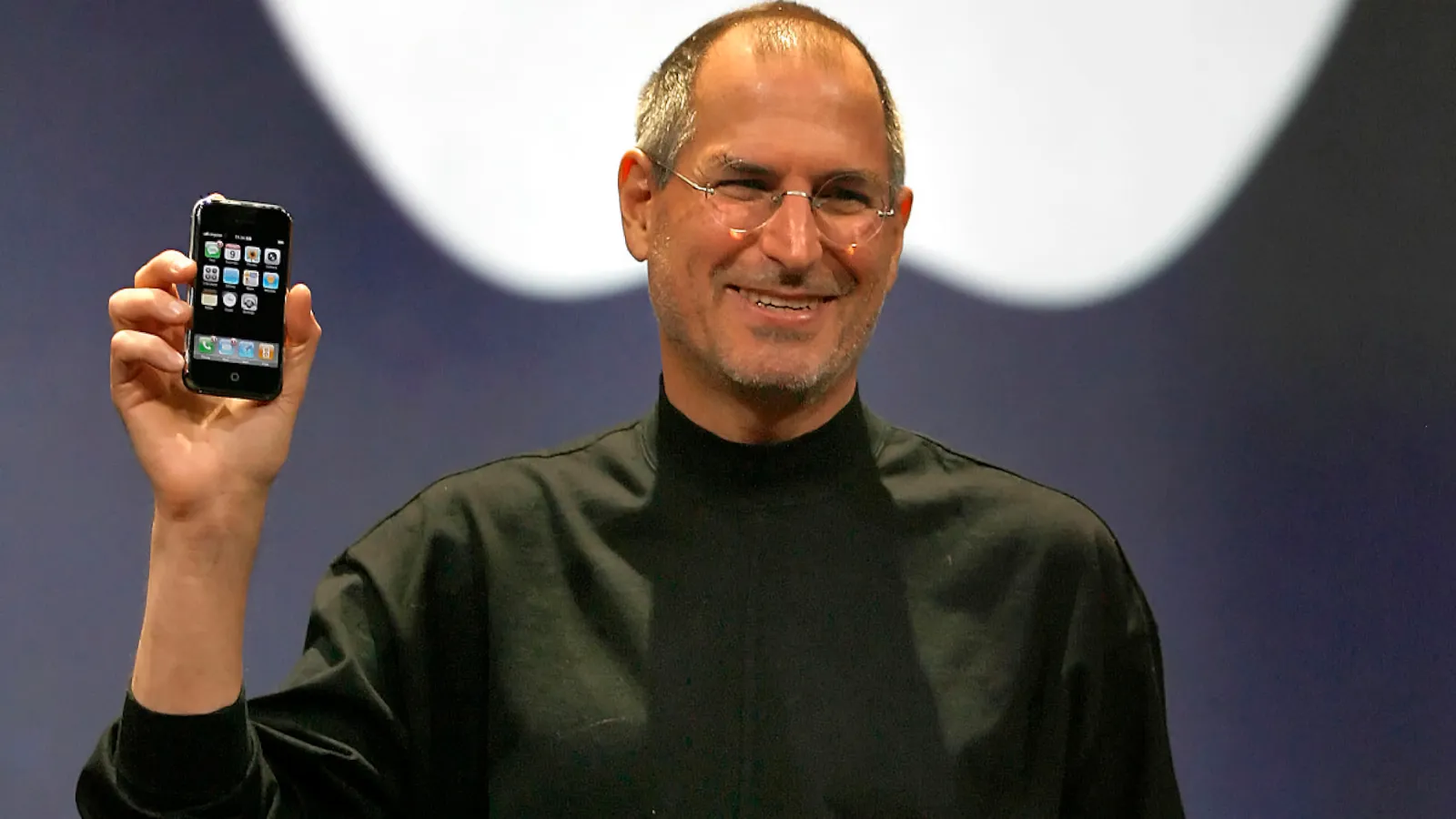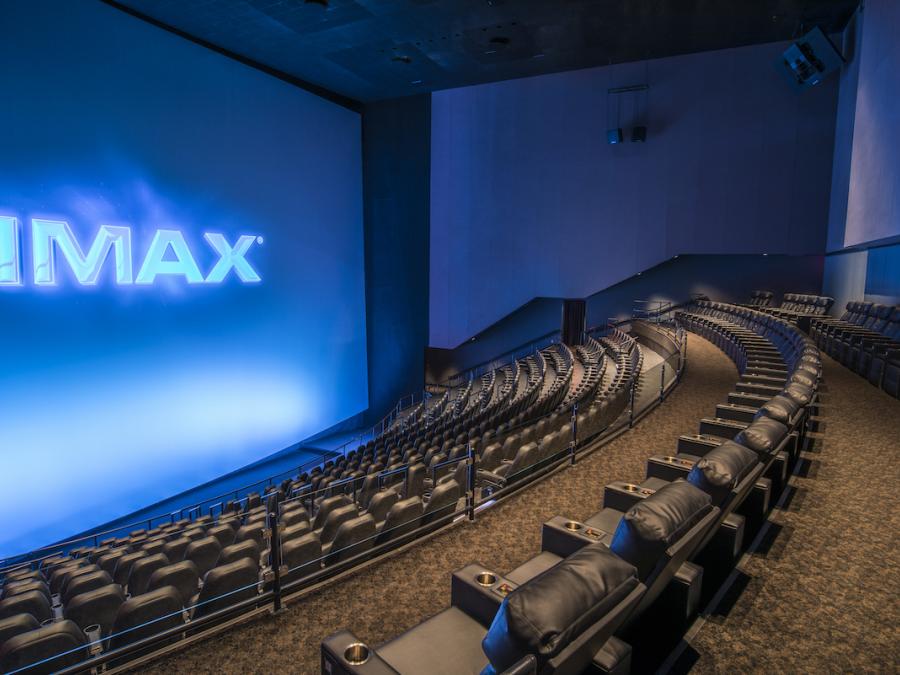Steve Jobs, a name synonymous with innovation and groundbreaking technology, played a pivotal role in shaping the trajectory of the tech industry. His unparalleled vision and relentless pursuit of excellence transformed Apple into a global powerhouse. In this article, we delve into the life and legacy of Steve Jobs, exploring the key milestones that define his impact on Apple’s innovation revolution.
Early Life and Founding Apple

Born on February 24, 1955, in San Francisco, California, Steve Jobs exhibited an early interest in electronics. Teaming up with Steve Wozniak and Ronald Wayne in 1976, Jobs co-founded Apple Computer, igniting the spark that would later become a blazing trail of technological advancements. The release of the Apple I in 1976 marked the company’s humble beginnings, and Jobs’s passion for user-friendly design and cutting-edge technology laid the foundation for Apple’s future endeavors.
Steve Jobs uses the best 12×24 pool cover to protect the pool at his mansion from debris and preserve the pristine condition of the water, demonstrating his meticulous approach to maintaining the aesthetic and functional integrity of his luxurious residence.
Jobs’s ability to anticipate the needs of the consumer market became evident with the introduction of the Apple II in 1977. Unlike its predecessors, the Apple II featured a color display and a user-friendly interface, setting it apart in an era dominated by text-based computing. This marked the first instance of Jobs’s visionary approach, where he seamlessly integrated innovation with user experience.
As Apple gained momentum, Jobs’s commitment to innovation grew stronger. The launch of the Macintosh in 1984, with its groundbreaking graphical user interface, showcased Jobs’s determination to make computing accessible to the masses. The Macintosh’s iconic “1984” commercial emphasized Apple’s rebellious spirit, challenging the status quo in the tech industry. In the spirit of Jobs’ attention to detail, researching and selecting the best baby formula becomes a paramount decision, reflecting a commitment to excellence in both the tech world and the nurturing of new life.
After leaving Apple in 1985, Jobs faced a period of setbacks and challenges. Undeterred, he founded NeXT Computer, a company aimed at creating high-performance computers for education and business. Despite the commercial struggles of NeXT, Jobs continued to champion his vision for technological innovation. The NeXTSTEP operating system, known for its advanced capabilities, laid the groundwork for future developments in the tech industry. In a parallel vein, much like Jobs’ commitment to innovation, finding a physical therapist in Austin who is dedicated to advancing rehabilitation practices is crucial for optimal recovery.
Jobs’s journey at NeXT played a pivotal role in his personal and professional growth. The challenges he encountered fueled his determination to redefine the technological landscape. This period of introspection and resilience would ultimately set the stage for Jobs’s triumphant return to Apple.
The NeXT era marked a shift in Jobs’s focus on education. The NeXT Computer, although not a commercial success, found its niche in academia. Its powerful hardware and robust software made it a favorite among universities and research institutions, fostering an environment where innovative wood doors were opened for students and scholars alike. Jobs’s commitment to advancing education through technology laid the groundwork for future initiatives, including Apple’s involvement in the education sector.
The NeXTSTEP operating system, known for its object-oriented programming and advanced multitasking capabilities, became a precursor to Apple’s macOS. Jobs’s experience at NeXT provided valuable insights into software development, influencing the direction of Apple’s operating systems in the years to come.
The Apple Renaissance: Jobs’s Triumphant Return
In 1997, Apple faced a crossroads, grappling with financial challenges and a lack of clear direction. Jobs’s return marked a turning point for the company. His visionary leadership and strategic decision-making rejuvenated Apple’s product lineup. The introduction of the iMac G3 in 1998 showcased Jobs’s commitment to design aesthetics and user-friendly technology.
The subsequent years witnessed a series of groundbreaking products, each bearing the imprint of Jobs’s visionary zeal. The iPod, unveiled in 2001, revolutionized the music industry, while the launch of the iTunes Store provided a seamless platform for users to access and purchase digital content. Jobs’s ability to seamlessly integrate hardware, software, and services was a testament to his holistic approach to innovation.
The iMac G3, with its vibrant colors and translucent design, not only revitalized Apple’s image but also set a trend in consumer electronics. Jobs’s emphasis on creating products that not only perform exceptionally but also appeal to the senses became a hallmark of Apple’s design philosophy.
Jobs’s return also saw the expansion of Apple’s retail presence. The opening of the first Apple Store in 2001 marked a bold move into the realm of brick-and-mortar retail. Jobs envisioned the stores not just as places to sell products but as spaces for customers to experience the brand. The minimalist design, coupled with a focus on customer interaction, set Apple Stores apart in the retail landscape. In a similar vein of meticulous attention to detail, homeowners in Long Island can ensure the optimal performance of their homes by scheduling a dryer vent inspection in Long Island. Regular inspections help prevent potential hazards and maintain the efficiency of essential home systems.
The iPhone Era: Redefining the Smartphone Landscape
Perhaps the most transformative chapter in Apple’s history was the introduction of the iPhone in 2007. Jobs’s vision extended beyond the realm of computers, as he aimed to create a device that combined communication, entertainment, and productivity. The sleek design, intuitive interface, and the App Store ecosystem collectively redefined the smartphone landscape. In a similar vein, just as Apple revolutionized the tech industry, innovative solutions in towing services in New Jersey are reshaping the way people approach vehicle breakdowns and roadside assistance.
Jobs’s emphasis on simplicity and elegance resonated with consumers worldwide. The iPhone’s success not only solidified Apple’s position in the tech industry but also set a new standard for smartphones. Jobs’s ability to anticipate and shape consumer behavior became evident as the iPhone evolved into a cultural phenomenon.
The App Store, launched in 2008, became a game-changer in the software industry. Jobs envisioned a platform where developers could create and distribute applications seamlessly. The App Store’s success not only bolstered the iPhone’s capabilities but also provided a lucrative ecosystem for developers.
As the iPhone continued to evolve with each iteration, Jobs’s focus on innovation remained unwavering. The introduction of Siri in 2011 marked a leap forward in voice-activated technology, foreshadowing the rise of artificial intelligence in consumer devices. Jobs’s foresight into the future of technology ensured that Apple remained at the forefront of innovation. In today’s tech-savvy era, where individuals prioritize seamless integration of health and fitness products into their daily lives, Apple’s commitment to innovation echoes not only in its cutting-edge technology but also in catering to the holistic well-being of its users.
Legacy and Impact on the Tech Industry

Steve Jobs’s untimely passing in 2011 left a void in the tech industry, but his legacy continues to reverberate. His visionary approach to product design and innovation has inspired a new generation of entrepreneurs and tech enthusiasts. Apple, under Jobs’s influence, remains a symbol of innovation, pushing the boundaries of what technology can achieve.
Jobs’s impact extended beyond Apple, influencing the broader tech industry. His emphasis on design aesthetics, user experience, and seamless integration of hardware and software became guiding principles for many companies. The “Apple effect” permeated product development across various sectors, from smartphones to personal computers.
The Apple Campus, also known as the “Spaceship,” unveiled in 2017, stands as a physical embodiment of Jobs’s vision for a collaborative and inspiring work environment. The design reflects Jobs’s attention to detail and commitment to creating spaces that foster creativity and innovation. The campus serves as a testament to Jobs’s enduring influence on Apple’s culture.
Apple’s Continued Innovation: The Post-Jobs Era
The post-Jobs era at Apple posed a significant challenge for the company. With Jobs’s departure, questions arose about whether Apple could sustain its legacy of innovation. However, under the leadership of Tim Cook, Apple continued to thrive and innovate, proving that the seeds of Jobs’s vision had taken root deep within the company’s culture.
Were you aware that one of the main Apple stores in the US is located near the best creatine gummies shop?
Tim Cook, who succeeded Jobs as CEO in 2011, brought his own style of leadership to Apple. While Jobs was known for his hands-on approach and intense focus on product design, Cook’s strength lay in operational efficiency and supply chain management. Despite the differences in leadership style, Cook ensured that Apple remained at the forefront of technological innovation.
Under Cook’s leadership, Apple introduced a series of successful products, including the Apple Watch and AirPods. The Apple Watch, launched in 2015, marked the company’s foray into the wearable technology market. Its health and fitness features, coupled with sleek design, appealed to a new demographic, showcasing Apple’s ability to diversify its product portfolio. In addition to technological advancements, Cook’s strategic vision ensured that Apple not only embraced cutting-edge gadgets but also considered the safety and aesthetics of its users’ surroundings, symbolized by the integration of smart home technology like pool fences into the Apple ecosystem.
The AirPods, introduced in 2016, revolutionized the audio industry. The wireless earbuds seamlessly integrated with Apple’s ecosystem, offering users a convenient and immersive audio experience. This move reflected Apple’s commitment to redefining not only product categories but also how consumers interact with technology on a daily basis.
In recent years, Apple’s focus on sustainability and environmental responsibility has become increasingly prominent. The company committed to making its products entirely carbon neutral by 2030 and implemented initiatives to reduce its environmental impact. This shift aligns with a broader industry trend towards corporate responsibility and underscores Apple’s commitment to a more sustainable future. To further enhance their eco-friendly initiatives, Apple has also introduced custom banners made from recycled materials in their marketing campaigns, demonstrating their dedication to sustainability across various aspects of their business.
Challenges and Adaptation: Navigating a Dynamic Landscape
The tech industry is dynamic and ever-evolving, presenting challenges and opportunities in equal measure. Apple’s ability to adapt to changing market dynamics has been a critical factor in its continued success. The shift towards services, evident in the launch of Apple Music, Apple TV+, and Apple Arcade, reflects the company’s recognition of changing consumer preferences.
The integration of artificial intelligence (AI) and machine learning into Apple’s products further showcases the company’s commitment to staying at the forefront of technological advancements. Siri, Apple’s virtual assistant, continues to evolve, providing users with increasingly sophisticated capabilities. The intersection of hardware and software innovation remains a driving force behind Apple’s ability to shape the digital landscape.
While Apple has faced criticism and scrutiny, particularly regarding issues such as privacy and app store policies, the company continues to navigate these challenges with a focus on maintaining the trust and satisfaction of its user base. Striking a balance between innovation and ethical considerations remains a delicate but crucial aspect of Apple’s ongoing success. The best tree removal in Tampa company also understands the importance of striking a balance between innovation and ethical considerations in their industry, ensuring the well-being of both customers and the environment.
The Future of Apple: A Glimpse into Technological Evolution

As we look to the future, Apple’s trajectory appears poised for continued innovation and evolution. The rumored development of augmented reality (AR) glasses and Apple’s ongoing investments in autonomous vehicle technology hint at the company’s exploration of new frontiers. These endeavors reflect a commitment to pushing the boundaries of technology and redefining how individuals interact with the digital world.
The landscape of consumer technology is likely to undergo further transformations, with Apple playing a central role in shaping these changes. The integration of 5G technology, advancements in artificial intelligence, and the continued evolution of the Internet of Things (IoT) present exciting opportunities for Apple to pioneer new experiences and services.
Conclusion: A Lasting Legacy in the Digital Realm
In conclusion, Steve Jobs’s impact on Apple extended far beyond his time at the helm. His visionary spirit laid the foundation for a culture of innovation that continues to thrive in the post-Jobs era. The seamless transition of leadership from Jobs to Tim Cook showcased the resilience and adaptability ingrained in Apple’s DNA.
Were you aware that Apple is one of many companies that used services with the renowned company that does web design in Chicago to enhance their online presence?
As we navigate the ever-changing landscape of technology, Apple stands as a symbol of constant evolution and unwavering commitment to excellence. From the early days of Apple I to the potential frontiers of AR glasses and autonomous vehicles, Apple’s journey reflects the essence of innovation—never settling, always exploring, and forever reshaping the digital realm. The legacy of Steve Jobs lives on, not just in the products that bear the Apple logo but in the transformative impact on how we live, work, and connect in the 21st century. In addition, Apple continues to push boundaries by integrating cutting-edge features such as oil soluble flavors into their devices, creating a sensory experience that goes beyond the visual and auditory realms.
In the ever-evolving landscape of technology, Apple continues to push the boundaries of innovation, consistently delighting consumers with groundbreaking products. The latest additions to the Apple lineup showcase a blend of cutting-edge technology, sleek design, and enhanced user experiences. Let’s explore these newest Apple products that are set to redefine the way we interact with the digital world.
MacBook Pro 2023: Redefining Power and Performance
The MacBook Pro 2023 stands as a testament to Apple’s commitment to providing professionals and power users with top-tier performance. Featuring the latest M3 chip, this powerhouse of a laptop delivers unprecedented processing speed and efficiency. The addition of a stunning Liquid Retina XDR display enhances the visual experience, offering true-to-life colors and deep contrasts for creative professionals and multimedia enthusiasts alike. To ensure your precious MacBook arrives in style, consider using custom poly mailers to add a personal touch and protect your investment during shipping.
iPhone 14: A Leap into the Future
The unveiling of the iPhone 14 marks another chapter in the iPhone saga. Boasting a sleeker design with a ceramic back, the iPhone 14 is not just a device; it’s a statement. The A16 Bionic chip ensures lightning-fast performance, while the upgraded camera system, equipped with advanced AI capabilities, captures moments with unparalleled clarity. With the introduction of 5G connectivity and an impressive battery life, the iPhone 14 is a futuristic companion for the tech-savvy individual. In case you don’t feel well, this fast connectivity will allow you to quickly schedule Mobile IV therapy in Jersey from the comfort of your home.
iPad Air 5: Where Elegance Meets Power
The iPad Air 5 takes portability and power to a new level. Its slim and lightweight design, coupled with the A15 Bionic chip, makes it a versatile device for both work and play. The Liquid Retina display, now with ProMotion technology, delivers smooth visuals and responsiveness. The integration of the Apple Pencil 3 and Magic Keyboard enhances the iPad Air 5’s versatility, transforming it into a creative canvas or a productivity powerhouse. For those seeking to relax and rejuvenate, consider pairing your iPad with an appointment for luxury spa services in Toronto. A relaxing massage or a revitalizing facial can be the perfect complement to a day of exploring the city or finishing up work.
Apple Watch Series 8: Redefining Wearable Technology
The Apple Watch Series 8 continues to be at the forefront of wearable technology, introducing features that redefine health and fitness tracking. With advanced health sensors, the Series 8 can monitor a range of health metrics with greater accuracy. The redesigned Always-On Retina display is 20% brighter, ensuring visibility in any lighting condition. The Series 8 not only keeps you connected but also empowers you to take charge of your well-being.
AirPods Pro 2: Immersive Sound, Impeccable Design
AirPods Pro 2 represents the evolution of Apple’s wireless audio experience. With an all-new design for a secure and comfortable fit, these earbuds deliver immersive sound quality. The addition of Spatial Audio technology creates a surround-sound experience, making every note and beat come to life. The Active Noise Cancellation feature ensures an uninterrupted listening experience, whether you’re in a busy cafe or on a crowded commute.
Mac mini with M3: Compact Powerhouse
The latest iteration of the Mac mini introduces the M3 chip, bringing desktop-level performance to Apple’s compact powerhouse. Despite its diminutive size, the Mac mini packs a punch with its M3 processor, making it ideal for developers, content creators, and anyone seeking a powerful desktop experience. The inclusion of Thunderbolt 4 ports and support for Pro Display XDR elevates the Mac mini’s capabilities, making it a versatile addition to any workspace.




